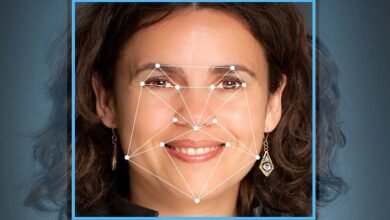The Future of AI Image Search: What’s Next?

AI image search has already transformed how we interact with the visual world. AI transforms the search experience from object recognition to scene understanding. But where is this technology headed in the future? Join me as we delve into the next generation AI image search — new and innovative ways that AI search image will change (and how you will use it).
AI Image Search: A Snapshot of Today’s Technology
To know how AI image search will look in the future, however, we must first look at what it looks like today. Advanced AI-powered image search technology enables users to upload an image and find visually similar images or relevant results based on what the image depicts. For example, you upload a photo of a red chair, and AI brings up other photos of red chairs from around the web.
This search has already been a component of major search engines, with reverse image search functions available in companies such as Google and Microsoft. The current AI image search tools are powerful, but they’re only the start.
The Future of AI Image Search: Enhanced Visual Recognition
AI image recognition will also cross the line with much time spent searching. Now, AI can recognize the object, person, or animal in an image. However, as AI is trained on large data sets, it will eventually learn to interpret complex scenes better. This enables AI to identify a full scenario or context in a picture. For instance, it may look at a photo of a person in a park with a dog and not just see a person with a dog but rather a level of activity and leisure in an outside setting.
This major advancement in visual recognition will revolutionize industries, from digital marketing to e-commerce and even social media, where context and intention are as significant as the objects in the picture.
AI Image Search in E-Commerce: A Game-Changer for Shoppers
AI image search will evolve for one of the most interesting domains—e-commerce. This article is part of the Technology Newsletter series. Say you were looking to buy a specific product, maybe a TV or some shoes — with AI search image, you could snap a pic of it on your phone and immediately find that item or similar products across various online retailers. “This won’t just speed up shopping, but it could also help users identify better deals or options they might have otherwise overlooked,”
This technology can also be used with augmented reality (AR), enabling customers to upload photographs of themselves to see how specific products might look in their homes or on their persons. Alex Jeffrey’s AI image search here with AR 4.
AI Image Search and the Impact on Content Discovery
In the expanding digital universe, content discovery will be critical to making sense of data. AI image search is already enhancing how we search for images, but what about videos, articles, and other content types? AI could eventually take this step further, looking at what’s shown in images to recommend articles, blog posts or videos based on what’s shown in the images.
For instance, you submit a photo of a beach at sunset. In other words, rather than just showing you more sunset and beach images, AI could also steer you to blog posts on photography tips for sunsets or a YouTube video of the best beaches for viewing. By leveraging this deeper understanding of context, discovering content will become far more seamless and intuitive.
AI Image Search and Visual Storytelling
Storytelling through visuals is one of the best ways to communicate, and AI image search will completely change the way we create and tell stories. In the future, we will have AIs that will not only know what objects are in an image but also the narrative behind the image and generate searches relevant to the tone/emotions/story of the image.
An image of a smiling family seated at a dinner table could lead to content about family recipes, activities to bond with family, or even gifts available for family get-togethers. While visual content will henceforth be a must-have ingredient in any rich, applicable storytelling narrative, AI will help storytellers (whether that’s for marketing purposes or not) provide in-context and emotive elements to a story.
The Role of AI Image Search in Accessibility
One more crucial area that will change accessibility through AI image search is. Similarly, AIs can also help visually impaired users navigate the website by describing images when they identify them near the point of touch or clicking. Tools like screen readers are already AI-powered, but the brains behind AI image search will take these tools to the next level, providing detailed descriptions of visual content.

For example, AI might explain what is in the image, mentioning colours, shapes, and even the emotional tenor of the photo. This would replace the digital experiences we replace with more interactive and informative experiences for the blind. AI image search may also help turn visual content into other media formats, including audio or text.
The Future of AI Image Search: Ethical Considerations
With AI image search evolving rapidly, we can’t forget the ethics behind growth. With the capacity to create deepfakes or potentially infringe upon individual privacy through surveillance systems, AI technology, especially image recognition, also has the opportunity to be abused. To do this in a responsible and accountable way, developers will have to adopt policies that safeguard users from the malicious applications of their technology.
In the near term, we will continue to see an emphasis on ethical models for AI as organizations and for-profit companies scramble to use AI while staying transparent and responsible. These principles include privacy, prohibition against discriminatory practices, and elimination of bias in AI algorithms.
Conclusion
As AI technology evolves, so too will the capabilities of AI image search. From enhanced visual recognition to its impact on e-commerce and content discovery, AI is set to change the way we interact with images and visuals online. The future promises a more intuitive, personalized, and accessible experience, while also raising important ethical considerations.
As we look ahead, it’s clear that AI image search will continue to open new possibilities for innovation, creativity, and exploration. Whether you’re a marketer, a content creator, or simply someone who loves discovering new things, the future of AI search image will offer plenty of opportunities to rethink how we navigate the digital world.
FAQs
How does AI image search work?
AI image search works by analyzing the visual features of an image, such as colors, shapes, and textures. The AI then matches these features with similar images in a database.
What are the benefits of AI image search for e-commerce?
AI image search allows users to quickly find products by uploading images, making shopping faster and more personalized. It can also help discover similar products at better prices.
Can AI image search understand context in an image?
Yes, in the future, AI will be able to understand not just objects but the broader context of an image, like the setting or the emotions conveyed in the scene.
Will AI image search improve accessibility for visually impaired users?
Absolutely. Future advancements in AI image search will provide detailed descriptions of images, making the digital world more accessible to people with visual impairments.
What ethical challenges are associated with AI image search?
AI image search raises ethical concerns such as privacy issues, misuse of the technology (e.g., deepfakes), and potential bias in algorithms. Developing ethical guidelines for AI is crucial to address these challenges.




